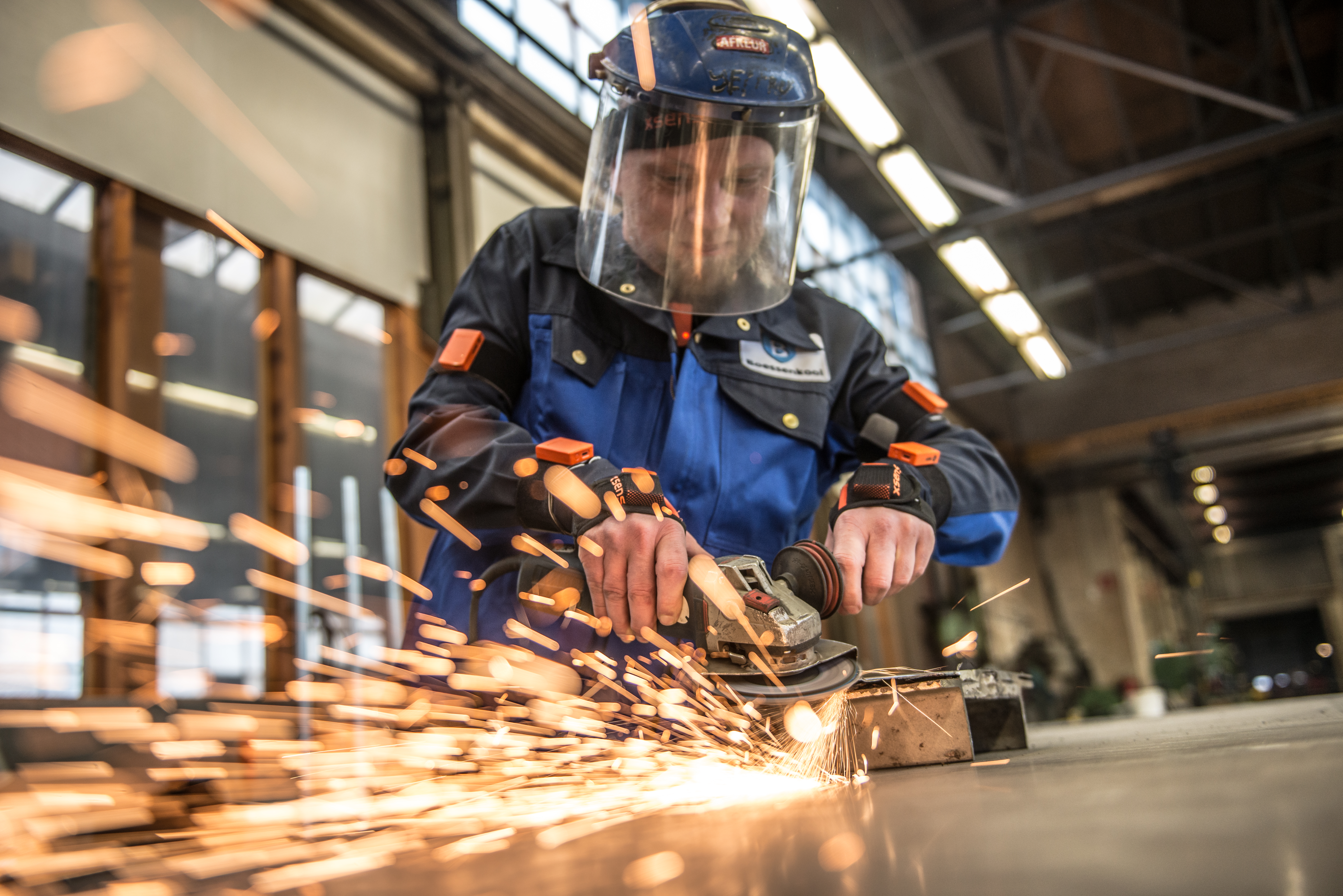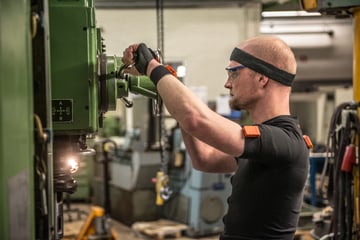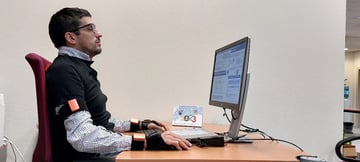
Motion Capture and the Future of Occupational Health and Safety
15th July 2024
Motion capture has emerged as the go-to technology for sophisticated movement analysis and ensuring occupational health and safety for workers. This article explores the benefits, applications, and challenges of the technology in ergonomic assessment.
Today, in an economy of unprecedented production volumes, occupational health & safety plays a key role in ensuring employee well-being. Through the years, researchers and ergonomists have employed various tools and techniques to analyze the way people move at the workplace and how it impacts their health. In recent years, the emergence of new technologies, such as motion capture, has ushered in a new era of reliable assessments, offering objective motion data and insights for ergonomic analysis. This article explores the importance of ergonomic assessment for workers' well-being and productivity of the organizations, and applications, benefits, and potential challenges of motion capture in the world of occupational safety.
Why occupational health & safety matters
The World Health Organization (WHO) has estimated that approximately 1.71 billion people worldwide suffer from musculoskeletal (ill-health) conditions. These conditions stand as a major contributor to disability on a global scale, with low back pain (LBP) emerging as the single largest cause of disability in 160 countries.
The annual global burden of work-related LBP has been staggering, with an estimated 22 million disability-adjusted life years attributed to it. In terms of compensation costs for occupational- and work-related accidents and diseases, musculoskeletal disorders (MSDs) account for about 40% of the global total. The societal economic cost associated with these conditions has been estimated to be 3.9% of the global gross domestic product and 3.3% of the gross domestic product in the European Union. For a stand-alone organization, a single injury can result in expenses ranging from $20,000 to $75,000 in medical, insurance, and legal costs.
Furthermore, the expenses associated with work-related injuries also include training a replacement, time delays, personnel shortages, and increased insurance costs. Poor ergonomic conditions, therefore, set up a domino sequence of workforce and time shortages, creating a stressful working environment and resulting in negative health consequences, injuries, and lowered productivity.
On the other hand, introducing a sophisticated ergonomics assessment at the facilities can decrease the direct and indirect costs of MSD injuries and improve employee retention and satisfaction with the workplace. A safe environment, putting the worker's well-being at the center of everyday processes, fosters a higher willingness to perform and can boost a facility's productivity by 46% [source: Goggins et al., 2008].
Traditional Methods Lack Objectivity
Traditionally, ergonomic assessments primarily relied on observation and subjective evaluations by healthcare professionals.
The most widely used method is the pen-and-paper approach, where an ergonomic specialist visually assesses and scores a worker's movements in accordance with established standards, such as NIOSH, RULA/REBA, EAWS, ISO, DIN, and EN. While these methods provide valuable insights, they are often limited by their subjectivity, lack of real-time data, and inability to capture intricate details of musculoskeletal movements.
Recognizing the limitations of traditional assessments, the integration of advanced technologies became imperative for more comprehensive and objective evaluations that can help with delivering the right recommendations.
Motion Capture in Ergonomics, A Gamechanger
Motion capture has emerged as a critical tool to address the challenges of traditional methods. It involves the recording of movement patterns, allowing for a detailed analysis of body kinematics. There are three main types of motion capture systems, each offering unique advantages and considerations in the context of workplace safety:
- Inertial Motion Capture
Inertial motion capture systems utilize sensors placed on the body to track movement. These sensors contain accelerometers, gyroscopes, and magnetometers that measure orientation, acceleration, and magnetic field interaction, enabling software to reconstruct movement in 3D space. Inertial systems are favored for their portability, ease of use, and ability to capture complex movements in real-world environments without the need for external markers or a controlled studio setting. Furthermore, inertial motion capture allows for the anonymity of the subject and privacy of the facility, only capturing the movement data. This makes them a practical choice for ergonomic assessments in various workplace settings. However, some initial calibration may be required for optimal accuracy, and potential drift error can occur over extended capture periods.
A leader in this field is Xsens, renowned for its accurate, user-friendly, and robust inertial motion capture technology. Xsens motion capture systems are particularly well-suited for capturing complex movements in real-world environments.
- Optical Motion Capture
Optical motion capture systems consist of multiple high-speed cameras placed on the perimeter of the "stage" where movement is performed. Reflective markers attached to the body act as a map, allowing the software to reconstruct the 3D movement data for each frame from the visual input. While optical systems offer high accuracy, particularly for detailed movements, they are less suitable for workplace ergonomics due to the need for a controlled environment, potential restrictions on movement, privacy considerations, and time-consuming setup and calibration.
- Markerless Motion Capture or AI
Markerless or AI motion capture does not require placement or markers or sensors on the subject's body and leverages computer vision and machine learning algorithms to analyze video footage and reconstruct 3D movement data. This emerging technology offers freedom of movement and potentially lower setup costs. However, accuracy can be lower compared to optical or inertial systems, especially for complex movements or in challenging lighting conditions, and the technology is still under development.
Inertial Mocap, Ideal for Workplace Health and Safety
Given the specific needs of ergonomics assessments at the workplace, inertial systems such as Xsens have emerged as the most practical and effective solution. Their portability, ease of use, and ability to capture data in real-world scenarios make them ideal for evaluating and improving. These systems eliminate the need for external markers, offering a more unobtrusive and adaptable solution for ergonomic assessments.
- Accuracy and Precision
Inertial systems such as Xsens are renowned for their high accuracy, providing researchers and practitioners with reliable data for comprehensive ergonomic assessments. The technology's precision in capturing joint impact, limb movement, and loads significantly enhances the overall accuracy of workplace ergonomic analyses.
- Cost-Effectiveness
A remarkable advantage of inertial systems is their cost-effectiveness. In comparison to optical systems, inertial motion capture technology offers a more affordable alternative without compromising data accuracy. This cost-effectiveness makes it an attractive option for businesses aiming to implement ergonomic solutions within budgetary constraints.
- Portability and Flexibility
Inertial systems are characterized by their lightweight design, portability, and ease of use, making them ideal for field-based measurements. Their flexibility allows for seamless integration into various workplace environments, providing real-time data without significant interference with subjects or the workspace.
- Real-Time Assessment
The real-time assessment capabilities of inertial systems are crucial for identifying ergonomic risks promptly. This feature allows for immediate interventions and adjustments, enhancing the effectiveness of workplace ergonomics. Real-time feedback not only promotes employee well-being but also contributes to heightened productivity.
Advancing Ergonomics with Motion Capture
Adopting motion capture for conducting ergonomics assessments has long term implications - from designing safer, more productive workspaces of the future, to encouraging healthier practices in the workplace.
- Ergonomic Risk Assessment
Inertial systems excel in ergonomic risk assessment by precisely capturing joint impact, limb movement, and loads. This granular data allows for a comprehensive analysis of musculoskeletal activities, enabling organizations to identify and promptly mitigate potential risks.
- Occupational Safety in Industrial Settings
In industrial environments where workers are exposed to heavy machinery and repetitive tasks, Inertial motion capture offers real-time insights into movement patterns. This facilitates the implementation of safety measures, reducing the risk of work-related musculoskeletal disorders.
- Training and Work Technique Optimization
Motion capture proves invaluable in training programs and optimizing work techniques. By providing detailed feedback on body movements, organizations can enhance employee training, improve work techniques, and prevent injuries resulting from poor posture or repetitive motions.
- Focus on employee well-being
Integrating motion capture into health and wellness programs fosters a proactive approach to employee well-being. Real-time assessments enable organizations to tailor wellness initiatives based on individual movement patterns, promoting a healthier and more active workforce.
- Research and Development
Motion capture serves as a crucial tool in research and development within the field of ergonomics. Researchers can leverage inertial systems to gather precise data, contributing to advancements in ergonomic guidelines, product design, and the overall understanding of human movement in occupational settings.
The integration of motion capture technology, especially inertial systems, becomes not just a matter of convenience but a strategic imperative for organizations aiming to address the profound impact of musculoskeletal conditions on a global scale.
Motion capture stands as a game-changer in the realm of occupational health and safety. Its applications span from risk assessment to training optimization, contributing to safer and healthier work environments. The benefits of accuracy, cost-effectiveness, portability, and real-time assessment position inertial systems as a pragmatic choice for organizations committed to prioritizing employee well-being and productivity. As technology continues to advance, the integration of motion capture into ergonomic practices holds the promise of shaping the future of occupational health and safety while addressing the global challenges posed by musculoskeletal conditions.
Learn more about Xsens solutions for occupational health and safety.
Related articles
Newsletter
Sign up here for the Movella newsletter and stay up to date about everything Movella has to offer.



